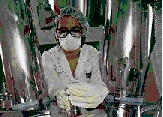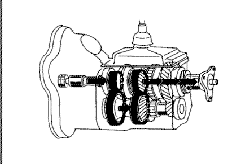



Trade secret law and patent grants are the two most important means for a creative person to protect their ideas. A trade secret will be protected by state law where the owner of valuable information takes steps to protect the secrecy. A patent is the right, granted by the federal government, to exclude all others from practicing a new and nonobvious invention. The choice of protection depends on the nature of the invention and the expectations of the inventor.
A successful business often accumulates methods and information that are the basis of competitiveness. Ideas such as efficient manufacturing processes or customer lists are valuable secrets for a business owner. These ideas are trade secrets protected by state tort and unfair competition laws when the owner takes reasonable steps to maintain confidentiality. In other words, if the owner protects business secrets from the public, competitors may not legally obtain them through spying or through the loose lips of employees.
Reasonable steps to maintain confidentiality of trade secrets include identification of the trade secrets, exclusion of secrets from public view and requiring employees to sign agreements not to disclose confidential information. A reasonably protected trade secret may not be taken through deception, spying, bribery of employees or breach by contracting partners. A trade secret is protected indefinitely if it retains value and is not generally known in the field of trade. However, trade secret law protects the owner only from loss of the trade secret by �improper means�. Competitors remain free to independently develop the same ideas, even by examination of the business�s product (reverse engineering) or examination of public documents such as environmental impact reports.
Trade secret protection is well suited to ideas that are easily hidden and hard to reverse engineer. Patent protection is often better for inventions exposed to the public or inventions that shortly become obsolete.
 Article I, Section 8
of the Constitution of the United States, gives the Congress the power to
�promote the Progress of Science and useful Arts, by securing for limited
Times to Authors and Inventors the exclusive Right to their respective Writings
and Discoveries�. The Congress has devised a system to promote science
by motivating inventors to make their secrets public. In exchange for a
patent guaranteeing a 20 year right to exclude others from practicing an
invention, the inventor must disclose the entire invention to the public.
To be granted a patent, the invention must be new and not an obvious modification
to an old idea. The scope of the patent protection is limited to the scope
of the invention exposed to the public in the patent application.
Article I, Section 8
of the Constitution of the United States, gives the Congress the power to
�promote the Progress of Science and useful Arts, by securing for limited
Times to Authors and Inventors the exclusive Right to their respective Writings
and Discoveries�. The Congress has devised a system to promote science
by motivating inventors to make their secrets public. In exchange for a
patent guaranteeing a 20 year right to exclude others from practicing an
invention, the inventor must disclose the entire invention to the public.
To be granted a patent, the invention must be new and not an obvious modification
to an old idea. The scope of the patent protection is limited to the scope
of the invention exposed to the public in the patent application.
The invention must be new in order to qualify for patent protection. Before an inventor applies for a patent, a novelty search should be made to check the public domain for patents or publications (prior art) that show another person conceived the invention first. Should prior art be discovered in the novelty search, the invention may not qualify for patent protection.
Patent protection may be denied if prior art is discovered which is too similar to the invention. The invention is not patentable if the difference between the invention and prior art would have been obvious at the time of conception to a person having ordinary skill in the field of the invention.
An inventor can lose the right to patent a new and non obvious invention if a mistake is made in the patent application. Successful administration (prosecution) of a patent application requires timely, honest and complete disclosure of the invention to the U.S. Patent and Trademark Office. If an invention is sold or used in public, a patent application must be filed within 12 months or the opportunity will be lost. If the essence of an invention is published, even in a speech to a small group, a patent application must be filed within 12 months. If an application contains any deceitful expressions, such as intentionally misnaming the inventor, the PTO can render all related patent claims unenforceable. The inventor has a duty to disclose the �best mode� of practicing the invention at the time of filing the application. Failure to do so invalidates the patent.
During prosecution of a patent application, the PTO is required to keep the invention secret. The inventor should continue to employ trade secret protection until the patent is issued or in case the patent is rejected. When the patent is granted, the invention will no longer be a secret - the invention will be published in the PTO Gazette. All for the better! The world is on notice that the inventor has exclusive rights to the intellectual property. If anyone else wants to use the invention, they can be required to pay licensing fees and royalties. But that�s another web page.
If you have ideas or inventions that should be protected with trade secret law or patent rights, contact LawSci for inexpensive personal service.